Brazilian pig farming mostly adopts integrated management between producers and industries as a production model. Pig farming in Brazil has an important part of the country’s agriculture, and it continues to be so today. With the right care and management, pigs can thrive in the Brazilian climate and provide farmers with a valuable source of income.
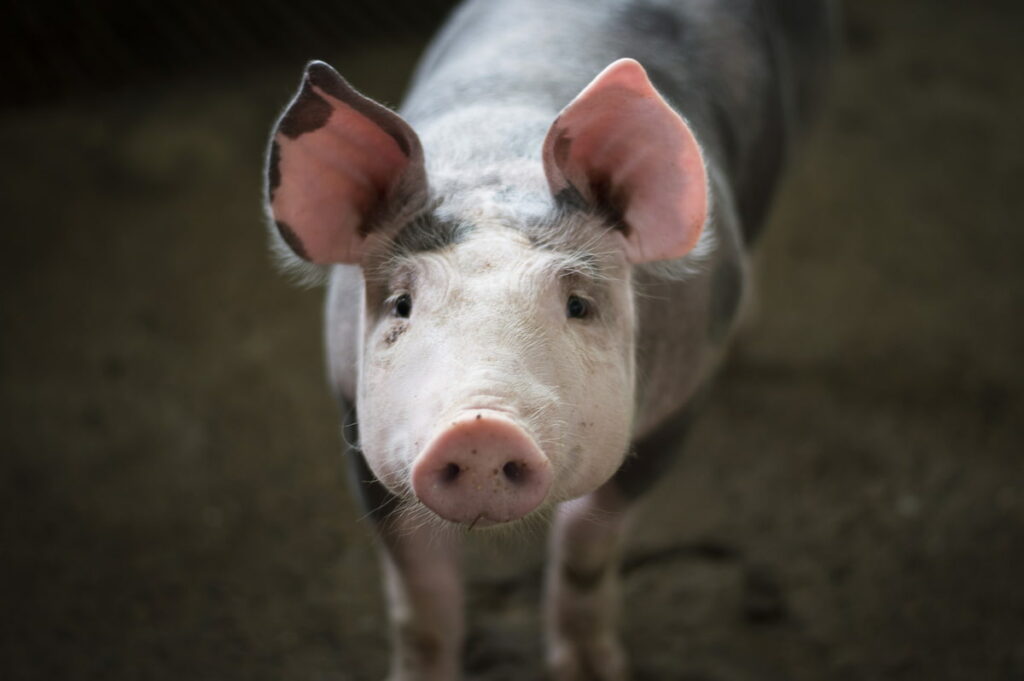
How to start pig farming in Brazil
How many pig farms are there in Brazil?
Pig farming is an important agricultural sector in Brazil, with an estimated 5,000 pig farms in the country. These farms vary in size and production capacity, with the majority being small to medium-sized operations. The Brazilian pig industry is largely export-oriented, with pork products accounting for over 70% of all meat exports from the country. The main destinations for Brazilian pork exports are Japan, Italy, South Korea, China, and Hong Kong. The Brazilian Association of Animal Proteins (ABPA) is a key player in promoting and developing the country’s pig industry.
Is pig farming profitable in Brazil?
Pig farming can be a very profitable enterprise in Brazil. The country has a large domestic market for pork, and exports of pork products are growing. In addition, Brazilian pig farmers can access the good quality feed, efficient production systems, and favorable climatic conditions.
These factors allow them to produce pork at a lower cost than farmers in other countries. The Brazilian pig industry is facing some challenges, including the outbreak of African swine fever in neighboring countries and high levels of import competition. However, with proper management and government support, pig farming can continue to be profitable in Brazil.
Pig farming for beginners in Brazil
- Pig farming is an important economic activity in Brazil. Farming pigs in many ways, but the most common method is raising them in open-air pens. This type of pig farming is well suited to Brazil’s climate and geographical conditions.
- Pigs are social animals and need to be kept in groups. In an open-air pen, they should have access to a shady area where they can cool off and a wall or fence they can lean against. Pigs also like to root around in the dirt, so the pen should have a deep layer of fresh straw or sawdust to enjoy.
- Water is essential for pigs, and they should always have access to a clean water source. A nipple waterer is a good option for an open-air pen, as it helps keep the water clean and prevents the pigs from making too much of a mess.
- Food is another important consideration for pig farmers. Pigs are omnivores and will eat just about anything, but they do need a balanced diet to stay healthy. A corn and soybean diet is mainly used for pig feed in Brazil.
In case you missed it: Agriculture Farming in Brazil: How To Start, Major Crops, and A Step by Step Guide for Beginners
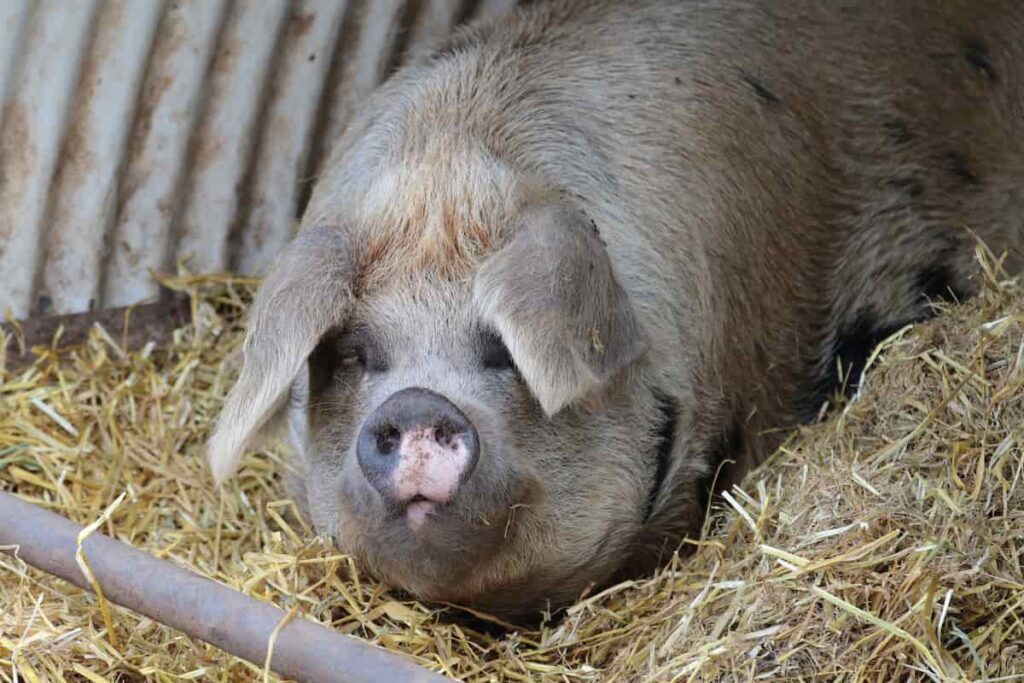
Steps for starting pig farming for beginners in Brazil
- The first step is to select a location for the farm.
- The second step is obtaining the government’s necessary licenses and permits.
- The third step is to purchase the pigs and other animals needed for the farm.
- The fourth step is to build the housing and other structures for the pigs.
- The fifth step is to care for the pigs and provide them with food and water.
Pig farming areas in Brazil
There are many pig farming areas in Brazil. The most common area is the Amazon rainforest. There are also pig farms in Rio de Janeiro, Sao Paulo, and Minas Gerais. Pig farming in Brazil began in the early 1800s. Brazilian farmers brought pigs from Europe to start their farms. Today, there are many different types of pigs in Brazil. Some popular breeds include the Landrace, Yorkshire, and Duroc.
The future of pig farming in Brazil
- Pig farming in Brazil is expected to grow in popularity in the coming years. This is mainly due to some factors, like the fact that pork is a popular meat in Brazil and that pigs are relatively easy to raise. Additionally, as Brazil’s economy continues to grow, more people will be able to purchase pork.
- As pig farming becomes more popular, larger farms will likely begin to spring up. These larger farms can take advantage of economies of scale and produce pork at a lower cost. Additionally, they can better control the quality of the pork they produce. As a result, Brazilian consumers will benefit from having access to cheaper, higher-quality pork.
Pig breeds in Brazil
There are many different breeds of pigs that can be found in Brazil. Some of the most popular breeds include the following;
Duroc
This breed is known for its leaner meat and higher-quality pork. It is a popular breed for commercial pig farms.
Landrace
This breed is known for its large size and high-fat content. Landrace pigs are often used for bacon and other fatty pork products.
Yorkshire
This breed is another popular choice for commercial pig farms due to its high pork quality. However, Yorkshires are also known for being quite aggressive, so they may not be the best choice for small-scale or hobby farms.
Tamworth
This heritage breed is known for its excellent bacon and ham quality. Tamworths are also one of the hardiest breeds, making them a good choice for farmers in areas with less-than-ideal conditions.
In case you missed it: How to Start Dairy Farming in Brazil: Business Plan, Breeds, Profits, and Loans
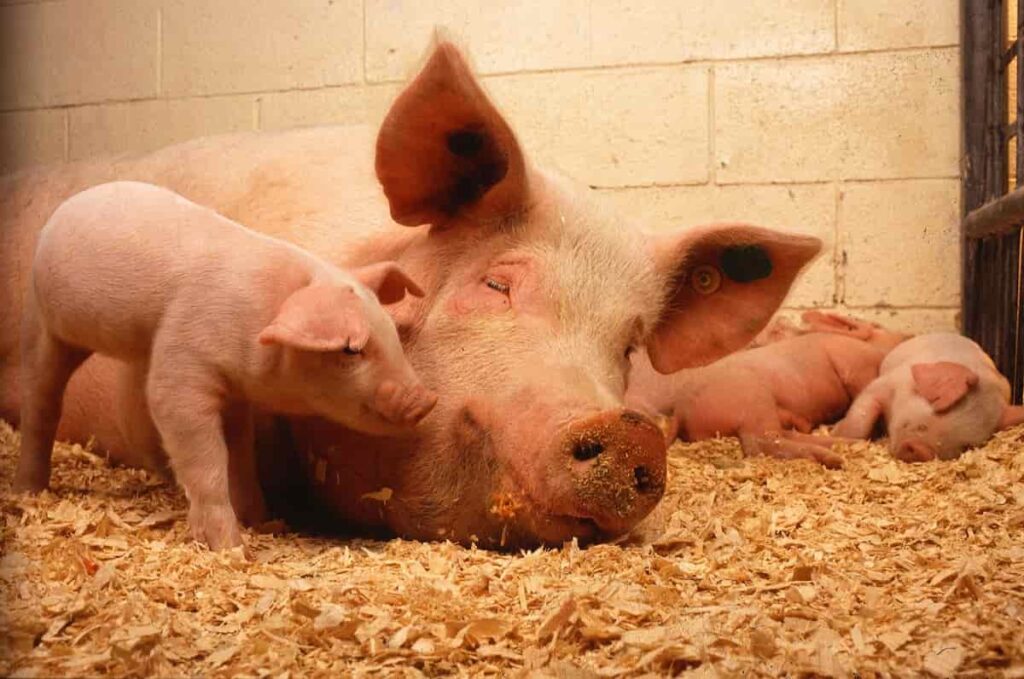
Pig feeding management in Brazil
- Pig feeding management in Brazil is a critical aspect of successful pig production. Some key factors to consider when developing a feeding program for pigs in Brazil include climate, feed availability, and economic factors.
- The climate in Brazil is variable, with a cool, wet season (April to September) and a hot, dry season (October to March). This means that pigs must be able to tolerate both extremes of temperature. Additionally, the daylight hours vary throughout the year, which can impact pork production.
- Pigs in Brazil are typically fed a diet of corn and soybean meal. Other common ingredients include sorghum, wheat bran, and sometimes rice bran. Vitamins and minerals are important additions to the diet to ensure the proper growth and development of the pigs.
- Feed availability can be a challenge in Brazil due to the large area of the country and the diverse climates found within it. Working with local feed suppliers to source the best quality ingredients is important.
- Economic factors play a role in pig-feeding management in Brazil as well. The cost of feed ingredients and transportation can impact the overall cost of production. Working with local suppliers and distributors can help reduce these costs.
Pig farming profits in Brazil
- In Brazil, pig farming is a profitable industry with many growth opportunities. Several factors contribute to this profitability, including the country’s large population and growing economy. Brazil is the world’s second-largest pork producer.
- Today, there are over 17 million pigs raised in Brazil each year. Most of these pigs are raised on small family farms, with only a small percentage raised on large commercial operations.
- The Brazilian pig industry is highly efficient and produces high-quality pork products. Pigs in Brazil are typically fed a diet of corn and soybeans, two of the country’s major crops. This diet results in cleaner, healthier pigs that provide consumers with a healthier product.
- Good animal welfare practices also characterize pig farming in Brazil. Pigs in Brazil are typically kept in well-ventilated barns with plenty of space to move around. They are also given access to outdoor areas where they can root and play. These standards result in happier, healthier pigs that provide better quality meat for consumers.
Pig farming problems in Brazil
Pig farming in Brazil has been fraught with problems in recent years. One of the biggest problems has been the outbreak of African swine fever (ASF), which decimated pig populations across the country. Other issues include environmental degradation, poor working conditions, and animal welfare concerns. ASF is a highly contagious disease that affects pigs of all ages and can lead to death within days. The virus is transmitted through contact with infected livestock animals or contaminated materials such as feed or bedding.
There is no cure for ASF, and it is fatal to pigs, so farms have had to cull entire herds to prevent the spread of the disease. This has led to a sharp decline in pork production in Brazil and high prices for pork products. Environmental degradation is another big problem facing pig farmers in Brazil. The intensive nature of pig farming can lead to soil erosion and pollution from manure. In addition, clearing land for pasture and feed crops can contribute to deforestation.
These livestock problems are compounded by the fact that many pig farms are located in sensitive areas such as the Amazon rainforest. Poor working conditions are also common on Brazilian pig farms. Farm workers work long hours for low pay and are exposed to hazardous materials such as manure and cleaning chemicals. In addition, they may be required to work with dangerous equipment such as power tools and machinery. Animal welfare concerns have also been raised about Brazilian pig farms. Pigs are typically kept in overcrowded.
In case you missed it: How to Start Greenhouse Farming in Brazil: Steps, Cost, Crops, Benefits, and Challenges
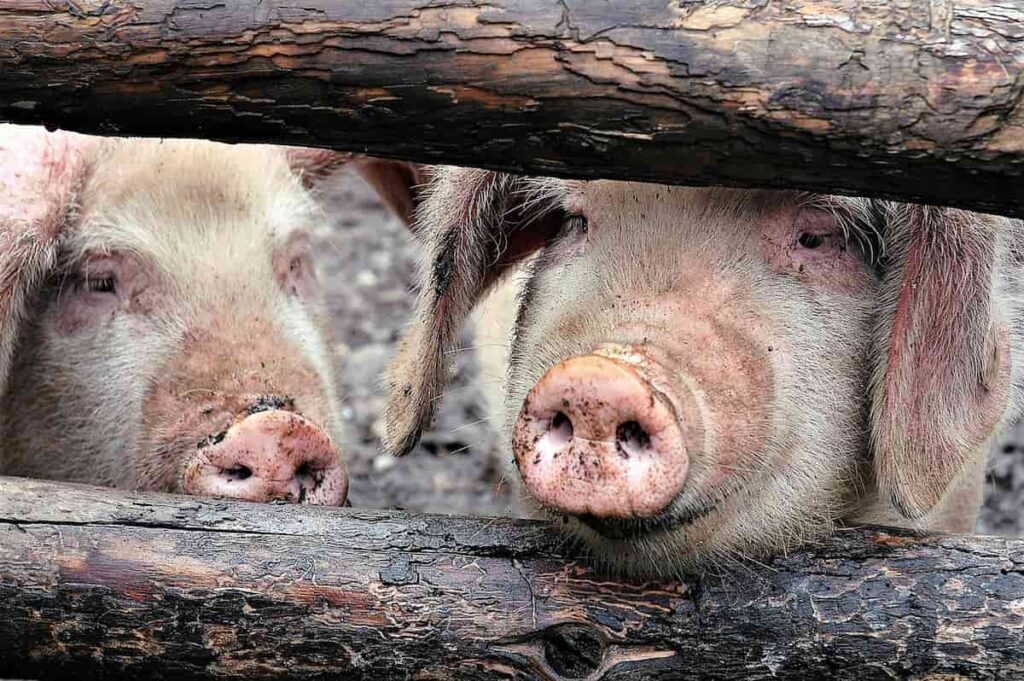
Pig farming challenges in Brazil
Pig farming in Brazil is not without its challenges. There are several significant challenges that pig farmers in Brazil face daily. These include:
- The high cost of feed.
- The limited availability of land for grazing.
- The challenges associated with transporting pigs to market.
- The risk of disease outbreaks amongst the pig population.
- The need for skilled labour.
- The challenge of disposing of waste products from the farm in an environmentally-friendly way.
Pig marketing in Brazil
In Brazil, pig farming is a big business. There are approximately 13 million pigs in the country, which makes it the third-largest producer of pigs in the world. Most of these pigs are raised on small family farms, but many large commercial operations are growing. Pigs are typically sold to slaughterhouses when they reach market weight, around 150 kg (330 lb). However, there is a growing demand for pork products in Brazil, so some farmers raise their pigs to heavier weights.
This can be done by providing Supplementary Feeding Systems (SFS), which give the pigs access to additional food and help them put on weight more quickly. The most common way to market pigs in Brazil is through live animal sales. Farmers will take their pigs to a central location, where buyers can inspect them and make offers. This sale usually happens ad hoc, so it can be difficult for farmers to find animal buyers.
Another option for marketing pigs is through contracts with slaughterhouses or processors. These contracts specify how many animals will be delivered and when and often include bonuses for meeting certain weight targets. This arrangement can provide more stability for farmers but may also tie them into working with a single buyer.
How profitable is pig farming in Brazil?
- The demand for pork is increasing in Brazil. This is due to the growing population and the fact that pork is a very popular meat in Brazil.
- The cost of raising pigs in Brazil is relatively low. This is due to the abundance of labor and land in Brazil.
- Brazil has a climate that is well-suited for raising pigs. The weather is warm and is plenty of rainfall.
- Pigs are relatively easy to care for and have a short gestation period. This means that farmers can raise more pigs per year than other types of livestock.
- The Brazilian government offers subsidies to farmers who raise pigs. This makes pig farming even more profitable.
- Pig farming is a big business in Brazil. There are many commercial farms, as well as small family farms. A pig farm business plan should consider the costs of land, buildings, equipment, and labor. It should also consider the market for pork products in Brazil.
In case you missed it: How to Start Goat Farming in Brazil: Rearing Business Plan, Breeds, and Management
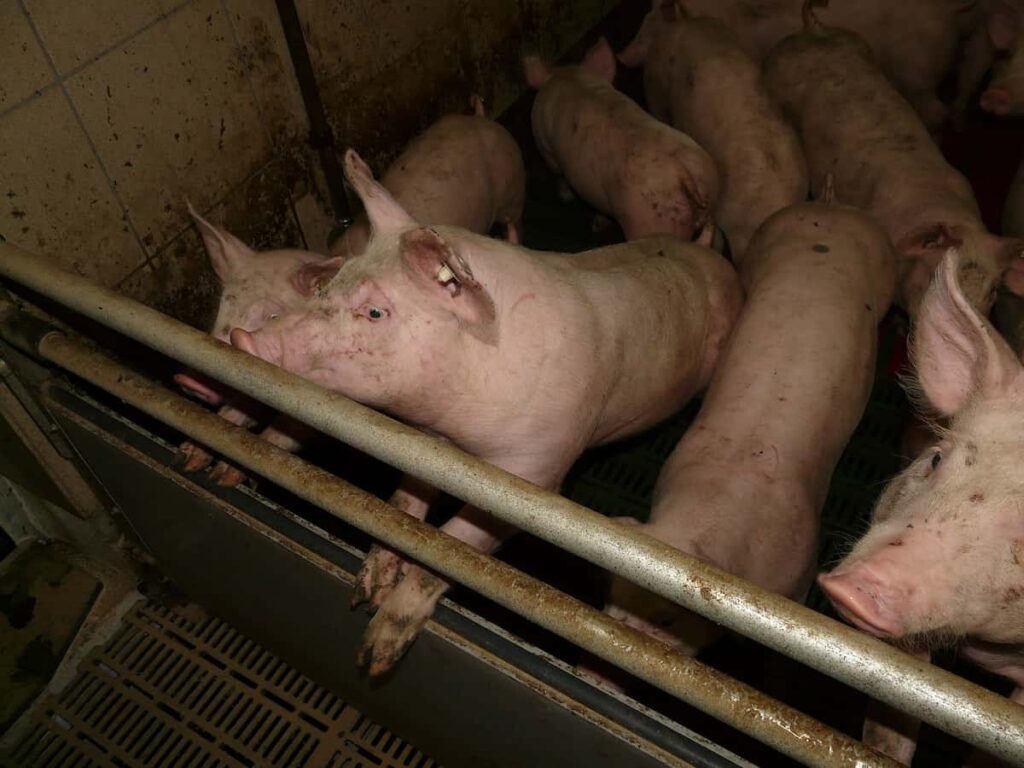
Pig farming types in Brazil
Small-scale pig farming
This type of pig farming is typically carried out by peasant farmers who keep a few pigs for their consumption.
Large-scale commercial pig farming
Large-scale commercial pig farms are typically owned by corporations and produce pork for domestic and international markets.
Integrated pig farming
This type combines small-scale and large-scale production, with the small-scale farmers supplying pigs to larger commercial operations.
Is pig profitable on a small farm?
Yes, pigs can be profitable on a small farm. Below are a few tips to make your pig farming operation more efficient and profitable:
- Choose the right breed of pig for your climate and production goals.
- Feed your pigs a nutritious diet to maximize their growth and health.
- Keep your pigs healthy by providing them with clean water, shelter, and space to exercise.
- Manage your pasture and grazing areas carefully to maintain good vegetation growth and minimize soil erosion.
- Market your pork products wisely to get the best price for your product.
Most commercial pig farms in Brazil are large operations with hundreds or even thousands of pigs. These farms typically use modern production methods and have good facilities for housing and caring for the animals.
Steps to start a pig farming business in Brazil
Decide what type of pig farming business you want to start
The main types of pig farms in Brazil are large-scale commercial operations, integrated pig farms, and small-scale family farms. You will want to decide which type of farm is right for you based on your budget, land availability, and desired production levels.
Obtain the necessary permits and licenses
Before starting your pig farm, you must obtain the proper permits and licenses from the Brazilian government. This process can be time-consuming, so it’s important to start early.
Find a suitable location for your farm
Once you have all the necessary paperwork, you will need to find suitable land to build your farm. The size of your farm will depend on the number of pigs you plan on raising.
Build the appropriate housing for your pigs
Pigs need adequate shelter from the elements, so you will need to build a comfortable home that meets their needs. Again, the size and type of housing will depend on the number of pigs you have and how much space you have available.
Purchase healthy pigs from a reputable breeder
The success of your pig farming business depends on having healthy animals.
In case you missed it: How to Start Sheep Farming in Brazil: Breeds, Business Plan, Challenges, and Management
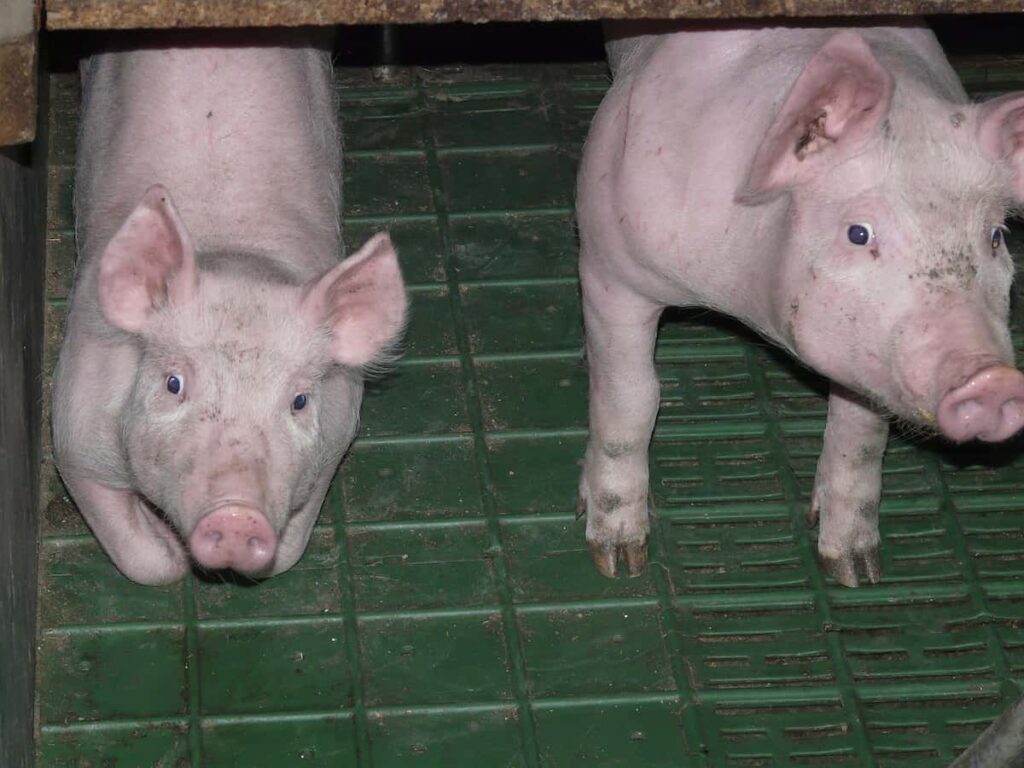
Pig farming cost in Brazil
Today, Brazil is one of the world’s largest pork producers, with nearly 3 million tonnes produced annually. The Brazilian pig industry is worth around R$14 billion and employs around 1.5 million people. Brazil is a major producer of pork and exports a large amount of pork to other countries.
The cost of a pig farm setup business in Brazil can vary depending on the farm size and location. The average cost to set up a small pig farm in Brazil is around R$10,000. This includes purchasing pigs, building pens, and other necessary equipment. The cost to set up a large commercial pig farm can be much higher, ranging from R$100,000 to R$1 million or more.
Conclusion
Pig farming plays an important role in Brazil’s economy. Pig farming in Brazil is a huge industry, with many small farmers raising pigs for commercial and personal use. Pig farming can be sustainable and profitable with the right management practices.
- How to Make Houseplants Bushy: Effective Tips and Ideas
- Innovative Strategies for Boosting Coconut Pollination and Yield
- Pollination Strategies for Maximum Pumpkin Yield
- The Complete Guide to Chicken Fattening: Strategies for Maximum Growth
- Natural Solutions for Tulip Problems: 100% Effective Remedies for Leaf and Bulb-Related Issues
- Revolutionizing Citrus Preservation: Towards a Healthier, Greener Future
- Natural Solutions for Peony Leaf and Flower Problems: 100% Effective Remedies
- Maximizing Profits with Avocado Contract Farming in India: A Comprehensive Guide
- Natural Solutions for Hydrangea Problems: 100% Effective Remedies for Leaf and Flowers
- The Ultimate Guide to Choosing the Perfect Foliage Friend: Bringing Life Indoors
- From Sunlight to Sustainability: 15 Ways to Use Solar Technology in Agriculture
- The Ultimate Guide to Dong Tao Chicken: Exploring from History to Raising
- The Eco-Friendly Makeover: How to Convert Your Unused Swimming Pool into a Fish Pond
- Mastering the Art of Delaware Chicken Farming: Essentials for Healthy Backyard Flocks
- 20 Best Homemade Fertilizers for Money Plant: DIY Recipes and Application Methods
- How to Craft a Comprehensive Free-Range Chicken Farming Business Plan
- Brighten Your Flock: Raising Easter Egger Chickens for Beauty and Bounty
- How to Optimize Your Poultry Egg Farm Business Plan with These Strategies
- Subsidy for Spirulina Cultivation: How Indian Government Schemes Encouraging Spirulina Farmers
- Ultimate Guide to Raising Dominique Chickens: Breeding, Feeding, Egg-Production, and Care
- Mastering the Art of Raising Jersey Giant Chickens: Care, Feeding, and More
- Ultimate Guide to Raising Legbar Chickens: Breeding, Farming Practices, Diet, Egg-Production
- How to Raise Welsummer Chickens: A Comprehensive Guide for Beginners
- How to Protect Indoor Plants in Winter: A Comprehensive Guide
- Ultimate Guide to Grow Bag Gardening: Tips, Tricks, and Planting Ideas for Urban Gardeners
- Guide to Lotus Cultivation: How to Propagate, Plant, Grow, Care, Cost, and Profit
- Agriculture Drone Subsidy Scheme: Government Kisan Subsidy, License, and How to Apply Online
- Ultimate Guide to Raising Araucana Chickens: Breed Profile, Farming Economics, Diet, and Care
- Bringing Hydroponics to Classroom: Importance, Benefits of Learning for School Students
- Ultimate Guide to Raising Polish Chickens: Breed Profile, Farming Economics, Diet, and Care
- Ultimate Guide to Raising Australorp Chickens: Profile, Farming Economics, Egg Production, Diet, and Care
- Silkie Chicken Farming: Raising Practices, Varieties, Egg Production, Diet, and Care
- Sussex Chicken Farming: Raising Practices, Varieties, Egg Production, Diet and Care
- Homemade Feed Formulations for Livestock: Discover Cost-effective Starter to Finisher Feed Recipes
- 20 Best Pig Weight Gain Supplements: Top Swine Weight Gain Formulas
- Ultimate Guide to Elderberry Farming: Propagation, Planting, Yield, Cost, and Profit